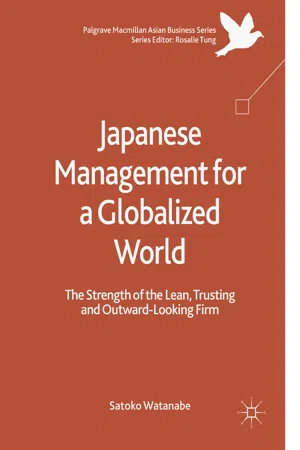Stresses and Strains in the Business World
In the early phases of globalization, when the advanced countries dominated the global economy, there was not much fear that globalization would produce a race to the bottom or induce an interminable negative spiral. As emerging economies like India and China have come to exert an increasingly powerful influence, however, the atmosphere has changed. People in the advanced countries have started to realize that the process of globalization will not necessarily make their own prospects brighter. The dominance of China as the world’s manufacturing powerhouse and the success of India as a center of service outsourcing pose particular threats to the established order. Evidently, global competition has become increasingly intense. The number of players in the global market has increased dramatically over past decades as former socialist countries and emerging nations have entered the capitalist economy. For companies, reducing costs and payroll expenses and improving quality are more urgent challenges than ever before.
Furthermore, companies have come under pressure to perform a growing number of roles for various stakeholders . Shareholders, clients, employees, and other stakeholders all make demands on companies, and society at large requires companies to fulfill numerous responsibilities. Nobody could have imagined these conditions forty years ago. Companies never had to face so many diverse demands then. Today, companies are required to achieve much higher levels of performance in order to survive as they are forced to meet the exacting demands of their various stakeholders and the wider society.
Many corporations in advanced countries have responded to the intensified global competition by adopting increasingly market-principle-oriented policies . These steps have included strategic alliances , outsourcing , diversification of work contracts, flatter management hierarchies, downsizing and restructuring , and greater flexibility. These policies have helped to improve results in many companies. But they have also brought wrenching changes to the employment situation and working conditions for many employees in the advanced countries. International competition and breakthroughs in IT have made managers more focused than ever on short-term returns. Together with new management techniques, these changes have made workers’ jobs more uncertain and contingent in almost every type of work.
Aiming for greater efficiency and seeking to cut payroll costs, many companies have reduced the proportion of permanent employees on full benefits, and instead increased the proportion of nonpermanent employees , including part-timers, fixed-term contract employees, and temporary staff. Companies have found they need to be able to adjust their workforce whenever necessary, in order to respond promptly to an ever-shifting business climate. Many companies have systematized non-regular employment as an important part of their recruitment policy to allow them to carry out such adjustments more easily. Many of the newly created jobs are overwhelmingly in these categories of non-regular employment. The change in employment patterns has had a significant impact on the structure of the labor market as a whole. The new economic environment in which free-market competition is being encouraged has produced a newly affluent class of people as successful entrepreneurs as well as a mass of workers without permanent jobs who move from one unstable, irregular, low-paid position to another. And in workplaces where permanent staff are being replaced by nonpermanent employees , remaining permanent employees often experience increased demands on their time and labor to make up for the insufficient knowledge or skills of the nonpermanent workforce.
Additionally, as noted above, many companies have worked to flatten their organizational hierarchies in an effort to become more competitive. This has led to the creation of decentralized units of profit and power within the organization as responsibility has been delegated down the management chain. In today’s knowledge, IT, and service industries, this type of shake-up in the workforce often means a heavier workload and more responsibilities on employees. Today, the production process depends on the involvement and commitment of employees to a much greater extent than was the case in the past. Formerly, employees worked with their colleagues on a particular stage of the production process; they were one of the cogs in the wheel. Today workers are called on to think, to be engaged, and to produce results for the company on their own initiative. 1 This tendency is particularly pronounced in the knowledge, IT, and service industries.
In the ever-expanding service sector, many jobs now involve a new kind of psychological stress not found in traditional blue-collar jobs. In the service industry, personal qualities like politeness, courtesy, kindness, and helpfulness have become the means by which people earn their living. People in these jobs must commodify not only their time and labor but also their very selves, including their personalities. They must constantly work to maintain a cooperative and amiable attitude—at least on the surface, and outwardly display the emotional state and expression that their customers and superiors require. 2 These conditions lead to stress and discontent.
Employees in managerial positions are also facing greater uncertainty. Until the 1980s, large companies in advanced countries were able to offer management-track employees what amounted to lifetime employment and a predictable route to promotion. This situation changed dramatically from the 1980s on. The competitive pressure of globalization has brought major changes to the unspoken agreements that previously defined the employment terms and practices among middle managers and other white-collar employees. The days of secure, lifetime jobs with predictable promotions and stable incomes are now widely believed to be a thing of the past. 3
The spread of E-mail and other IT tools has helped make work more efficient, but have also led to longer working hours. 4 These changes in the working environment have had an obvious impact on people’s attachment to work and levels of job satisfaction, as evidenced by the decline of employee motivation in many countries around the world. The following section takes a look at how workplace motivation has eroded around the world over the past few decades.
